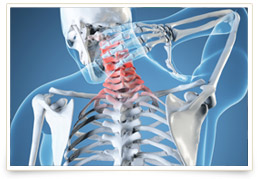by Tim Vander Wilt, PT
By far the most common type of neck pain that people experience, especially among those of you who are younger, is described as a “kink” or “crick” in the neck. Often times, that localized area of pain makes it difficult to turn your neck one way or the other. It is, quite literally, a pain in the neck!
Over the years, I’ve had many people consult with me reporting that they have a pinched nerve in the neck, and then they proceed to describe the typical kink in the neck that makes neck movement difficult and painful. While those symptoms are not pleasant, this common type of neck pain is not a pinched nerve.
To be sure, there are nerves that travel through small openings that exist between each vertebral body in the cervical spine (and each set of spine segments traveling down the back). However, if you have a condition that compresses one of those nerve roots, you will likely have distinct symptoms that are different from a kink in the neck.
What causes a kink in the neck?
Most medical providers suggest that a painful kink in the neck is the result of muscle spasms. A leading expert in this type of pain, Dr. Robert Maigne, a French medical doctor, described common neck pain as “painful intervertebral dysfunction.” The intervertebral joint consists of several structures: the disk, the vertebral bones above and below the disk, ligaments that provide structural stability, and the facet joints, which are located both on the left and the right where one vertebral bone connects to the neighboring vertebral bone. Irritation of any of these structures can cause a painful kink and possibly headache pain.
In my many years of experience as a physical therapist, I’ve found that the facet joint is often the primary culprit. When a facet joint gets irritated, which can happen from time to time if you move wrong, posture yourself awkwardly, or have some arthritic changes in the neck, a signal is sent to the brain, and the brain will unconsciously respond by telling the muscles around the joint to spasm. This unconscious response is a natural protective mechanism for the irritated joint.
It is important to know that a kink in the neck, though painful, is not dangerous. Most people can relieve the discomfort by modifying the aggravating postures, movement, or activities and applying ice and/or heat. If the pain lasts for more than a few days, consider seeing a physical therapist trained in evaluating and treating neck dysfunction. Early intervention usually results in a short course of care, and you will feel better very quickly in most cases.
What kind of distinct symptoms are present with a pinched nerve?
Our nerves carry critical information between the brain and the body. Some of this information is sensory, which travels from the body to the brain and includes our senses of pain, numbness, tingling, burning, temperature discernment, and pressure sensitivity, among others.
Some of the information carried via the nervous system is motor, which travels from the brain to the body and helps us create voluntary and involuntary muscle actions.
Nerves can potentially be compressed both centrally as they exit from the spine and peripherally by structures like tight muscles that exist external to the spine. Spine-related issues that can put pressure on a nerve as it exits the spine (i.e. central causes) include herniated disks and other arthritis-related changes like narrowing of the disk space, disk degeneration, and bone spurring.
Interestingly, if you are experiencing a pinched nerve, you may not even experience neck pain at all. Some do; others don’t. What you most definitely will be feeling, however, is pain, numbness, and/or tingling that extends into your arms and even your hands. Sensory changes in the arm are typically the earliest symptoms you will notice with a pinched nerve in the neck.
Like a kink in the neck, a pinched nerve is not necessarily serious. Most pinched nerves result in sensory changes only and can be easily managed conservatively. I would recommend you seek professional consultation if you experience these types of symptoms. A well-trained physical therapist can help determine the source of the nerve compression and determine a plan of care that will help you eliminate the symptom and restore your function.
If you experience changes in muscle function in your arm and/or hand, like a loss of pinch or grip force or other signs of muscle weakness, the compressive forces on the nerve(s) are more substantial and potentially need more advanced care. Our physical therapists typically refer people with these advanced symptoms to a physician or spine specialist for diagnostic testing to determine the extent of the problem.
If you are experiencing any arm symptoms or simply have a kink in the neck, I encourage you to take advantage of one of our free screens. A brief and complimentary 20-minute consultation with one of Kinetic Edge’s movement experts can yield a bounty of solid advice that will put your problem to rest. Please email us or call 866-588-0230 today to claim one a free screening.




